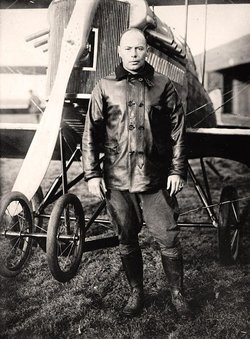BRIGADIER GENERAL WALTER GLENN KILNER
Walter Glenn “Mike” Kilner was born on July 8, 1888, in Shelby, New York. He was graduated from the United States Military Academy, West Point, New York, with a Bachelor of Science degree, and was commissioned a second lieutenant of Infantry on June 12, 1912.
SERVICE:
He joined the 3d Infantry in September 1912 and served with his regiment at Madison Barracks, New York, until November 1914, when he was detailed to the Aviation Section, Signal Corps, for pilot training at the Aviation School in San Diego, California. He qualified as a Junior Military Aviator on June 16, 1915. He served in San Diego as assistant to the officer in charge of training until December 1915, when he joined the 1st Aero Squadron at Columbus, New Mexico, serving there and in Mexico with the Punitive Expedition until August 1916. He then transferred to Mineola, Long Island, New York, where he took command of the Signal Corps Aviation School there.
He sailed for France in October 1917, where, in the following month, he took command of the 3rd Aviation Instruction Center, Issoudun, France. In April 1918, he moved to Tours, France for duty at Headquarters Services of Supplies, A.E.F., as Chief of Air Service Training in France, a post he held until January 1919, when he returned to the United States. He was then assigned duty in the Office of the Director of the Air Service, Washington, D.C., as a member of the Advisory Board. In addition to this duty, he was Chief of the Operations Group, from December 1920, until September 1921, when he was relieved from the Advisory Board.
He next served as Assistant Chief of the Training and War Plans Division in the Office of the Chief of the Air Service, Washington, D.C. from November 1921, until August 1922, when he attended the Air Service Engineering School, McCook Field, Ohio. Graduating the following year, he returned to the Office of the Chief of the Air Service in December 1923, as Assistant Chief of the Training and War Plans Division and Chief of the War Plans Section. He served in this dual capacity until July 1924, except for a period of temporary duty at Bolling Field, D.C., from February to May 1924, when he was assigned as Executive Officer in the Office of the Chief of the Air Service. Thereafter, he assumed fulltime duty as Executive Officer in the Office of the Chief of the Air Service (later, Air Corps).
Following a two-year tour of duty in the Philippines, 1927-1930, where he served as Commanding Officer of Nichols Field and the 4th Composite Group, and as acting Air Officer of the Philippine Department, he returned to duty as Executive Officer in the Office of the Chief of the Air Corps, Washington, D.C., serving in this capacity from May 1930, to May 1931. He was then assigned as Executive Officer in the Office of the Assistant Secretary of War for Air, F. Trubee Davison. He left this duty in August 1933, to attend the following schools: Army Industrial College, Washington, D.C., 1933-1934; Air Corps Tactical School, Maxwell Field, Alabama, 1934-1935, and the Army War College, Washington, D.C., 1935-1936.
In September 1936, he was appointed Inspector, General Headquarters (GHQ) Air Force, Langley Field, Virginia. Soon thereafter he was named Assistant Chief of Staff for Training and Operations, G-3, GHQ Air Force, which duty he relinquished on September 1, 1938, when he became Chief of Staff, GHQ Air Force, Langley Field. He reached the pinnacle of his career when he was named Assistant Chief of the Air Corps and promoted to brigadier general on September 29, 1938, succeeding Brigadier General Henry H. “Hap” Arnold, who replaced Major General Oscar Westover, Chief of the Air Corps, who had been killed in an airplane crash.
General Kilner was retired on November 30, 1939, due to physical disability.
He was rated a Military Airplane Pilot and Airplane Observer.
On December 21, 1939, President Franklin D. Roosevelt appointed General Kilner as a member of the National Advisory Committee for Aeronautics, replacing Colonel Charles A. Lindbergh, who had retired from the committee.

PRIVATE CITIZENS SUPPORTING AMERICA'S HERITAGE
American
War Memorials Overseas, Inc.
War Memorials Overseas, Inc.
Kilner Walter Glenn 'Mike'
Name:
Walter Glenn 'Mike' Kilner
Rank:
Brigadier General
Serial Number:
Unit:
3rd Aviation Instruction Center
Date of Death:
1940-08-30
State:
New York
Cemetery:
Arlington National Cemetery Arlington, Arlington County, Virginia
Plot:
Section 7, Grave 10037
Row:
Grave:
Decoration:
Comments:
